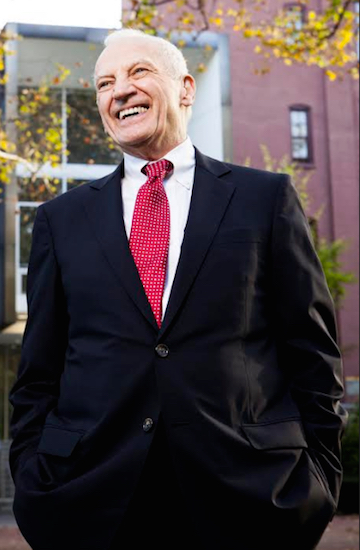OPINION: Teaching how to be a good neighbor, transforming a neighborhood from an educator’s perspective

Myrtle Avenue in the Clinton Hill/Fort Greene section of Brooklyn is a hub of activity, from street beautification projects to restaurant openings. In fact, it was used as a model of economic development when Robert Walsh, then commissioner of the New York City Department of Small Business Services, provided a tour to delegates from Northern Ireland in 2010, to showcase the emerging transformation of Myrtle Avenue as a template for the city of Belfast. Seventeen years earlier, however, Clinton Hill/Fort Greene had a very different landscape.
When I arrived in 1993 to serve as the 11th president of the 130-year-old Pratt Institute, the 20-block main commercial strip running through Clinton Hill into Fort Greene was in need of a turnaround. Nicknamed “Murder Avenue,” local residents and students avoided walking down Myrtle Avenue after dark, fearing for their safety. With one in five stores vacant, and high crime rates plaguing the area, the need to attract businesses and provide a better quality of life in the neighborhood was vital. Simultaneously, Pratt was experiencing a downturn, operating with a deficit of $16 million and a physical plant of buildings and grounds in a state of disrepair.
Facing these challenges, both Pratt and local Clinton Hill/Fort Greene residents came together to craft a forward-thinking plan to create a neighborhood that would “provide something for everybody” as urban theorist Jane Jacobs wrote. As an educator, taking a lesson plan right out of Pratt’s core curriculum was the model solution: apply critical thinking and problem solving skills in real-world situations through partnerships within the community. Forming an alliance with our neighbors, the Myrtle Avenue Revitalization Project (MARP) was born, where I served on the board, and later appointed chair.

Brooklyn Boro
View MoreNew York City’s most populous borough, Brooklyn, is home to nearly 2.6 million residents. If Brooklyn were an independent city it would be the fourth largest city in the United States. While Brooklyn has become the epitome of ‘cool and hip’ in recent years, for those that were born here, raised families here and improved communities over the years, Brooklyn has never been ‘uncool’.